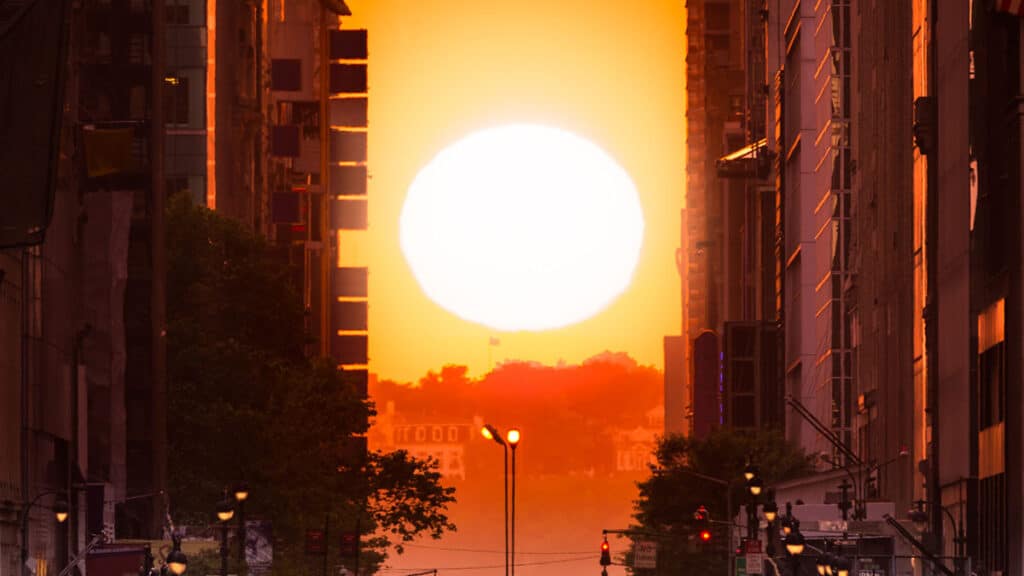
Manhattanhenge occurs on days when the sunset or sunrise lines up with Manhattan’s crosstown street grid between 14th St and 155th St. The name was coined by astrophysicist Neil deGrasse Tyson, Director of the Hayden Planetarium at the American Museum of Natural History.
The name is a reference to the way the prehistoric monument Stonehenge in England is designed to frame the sunrise of the summer solstice and the sunset of the winter solstice. Those days mark the change of seasons. The Manhattan grid alignment is accidental, but it is still a little magical when the sun sets or rises in line with Manhattan cross streets.
Manhattanhenge happens twice on summer sunsets and twice on winter sunrises. Plus each Manhattanhenge is actually two days. One day the sun’s full disk aligns with the street grid. The other day half the sun’s disk aligns with the street grid. So there are actually eight Manhattanhenge days every year.
Manhattanhenge is a Summer Sunset
Manhattanhenge happens twice in summer. It brackets the summer solstice. The first days just happen to be around Memorial Day and Major League Baseball’s All Star Break.
- Half sun: Wednesday, May 28, 2025 at 8:13pm
Full sun: Thursday, May 29, 2025 at 8:12pm - Full sun: Friday, July 11, 2025 at 8:20pm
Half sun: Saturday, July 12, 2025 at 8:22pm
The weather is warmer and more reliable in July, making it the best Manhattanhenge.
Reverse Manhattanhenge is a Winter Sunrise
Reverse Manhattanhenge is not as popular because it is cold, early in the morning, and the eastern horizon is more hilly, but Manhattanhenge also happens twice in winter. It brackets the winter solstice.
- Saturday, November 29, 2025
- Sunday, November 30, 2025
- Saturday, January 11, 2025
- Sunday, January 12, 2025
Best Manhattanhenge Viewing Spots
Wide cross streets are the best viewing spots. Go at least an hour early if you want to get a good spot. One of the best spots to see it is Fifth Avenue at 41st St, but it gets crowded.
- 79th Street
- 57th Street
- 42nd Street views include the Chrysler Building. The Pershing Square overpass is good but close to traffic. The Tudor City Bridge is a good spot, but crowded.
- 34th Street views include the Empire State Building.
- 23rd St
- 14th Street
In summer, Hunter’s Point South Park across the East River from 42nd St is a good spot too.
Looking directly at the sun is dangerous
It has to be said that looking directly at the sun can burn your eyes. Be careful even using solar viewing glasses. During recent eclipses, many people hurt themselves because their viewing glasses were fake and did not actually provide protection. Take care.
